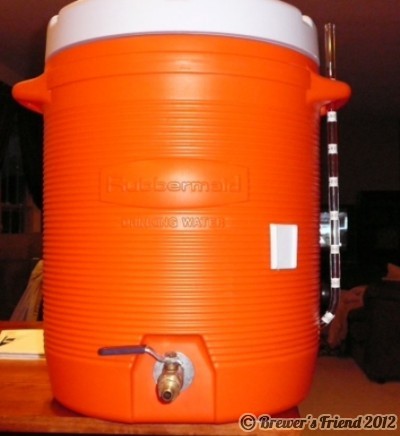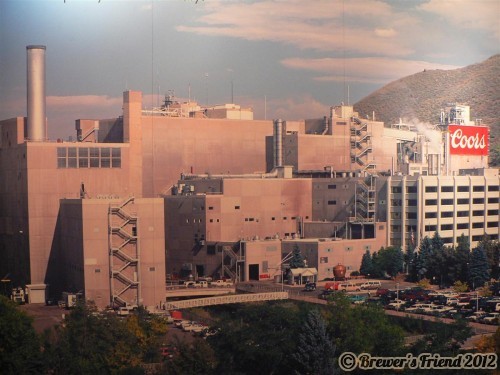Lautering Equipment False Bottom vs Manifold
Saturday, May 2nd, 2009There are some distinct differences between the these two popular methods of lautering your mash that you will want to consider prior to building your mash tun. As with most brewing equipment or brewing methods, you need to determine which one will provide you with the results that you desire.
A false bottom is simply a plate, generally stainless steel, that is filled with hundreds of uniformly spaced small holes. These are generally round, limiting the user to a round mash tun.

Fig 1: Example false bottom.
A manifold is simply a series if pipes, either CPVC or copper, that has been drilled or slotted with a saw. These are laid as closely to the bottom of the mash tun as possible with the holes or slots facing downward. A manifold can be constructed to fit any size or shape mash tun.

Fig 2: Example copper manifold which fits into cooler.
Time to explore some facts!
Let’s begin with a list of FACTS about false bottoms, their Pros and Cons.
PRO’s for false bottoms:
1. They are readily available, professionally manufactured
2. They are nearly 100% efficient
3. They will lauter nearly 98% of the grain bed uniformly
4. Grain bed depth barely affects their efficiency
5. They are more efficient than manifolds in all cases
CON’ s for false bottoms:
1. More prone to stuck sparges than manifolds
2. They are difficult to make yourself
3. They are only manufactured to fit ROUND coolers or buckets
Time for the FACTS about pipe manifolds, their Pros and Cons.
PRO’s for pipe manifolds:
1. Though not commercially available, they are very easy to manufacture at home
2. They are nearly 93% efficient
3. They will lauter nearly 93% of the grain bed unifromly
4. Stuck sparges are very rare with a properly built manifold
CON’s for pipe manifolds:
1. They are never as efficient as false bottoms
2. Grain bed depth with affect the efficiency of the lauter
3. Pipe spacing will affect the efficiency of the lauter
4. More prone to channeling (fluid taking path of least resistance, also rinsing less sugar)
5. Cleanup can be tiresome as it should be taken apart and rinsed completely.
False bottoms are pretty simple, there is little left to the imagination or to the design, this cannot be said for the construction of manifolds. There are a few principles that need to be discussed if you want to get the most out of your manifold.
#1. Plan your MLT size to coincide with having a deep grain bed, the deeper the better. This will serve to improve the efficiency of any manifold that you construct. A 12” or deeper grain bed is preferred.
#2. Plan the layout of your manifold pipes carefully, optimum spacing is about 2” to 2.5” between pipe centers, OR 4x the pipe diameter. (1/2” pipe spacing is optimal at 2” between centers, 3/8” pipe spacing is optimal at 1.5” on center etc…)
#3. Pipe spacing from the walls of the MLT should be planned at HALF of the optimal center to center distance from #2 above. (1/2” pipe spaced at 2” between centers, would be spaced 1” from center to the edge of the inner wall, 3/8” pipe would be spaced at .75” from the pipe center to the edge of the inner wall etc…)
The afore mentioned design rules will allow for the most efficient manifold for YOUR mash tun. The principles that govern the design needs for a specific manifold are related to fluid dynamics, fluid flow, path of least resistance and creating an even flow velocity around EACH tube in the manifold.





































